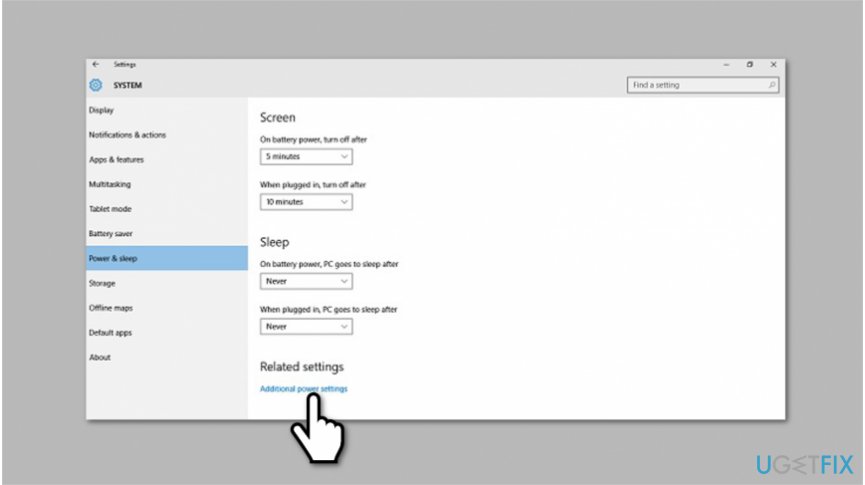

- MAC SLEEP COMMAND LINE HOW TO
- MAC SLEEP COMMAND LINE PLUS
- MAC SLEEP COMMAND LINE SERIES
- MAC SLEEP COMMAND LINE MAC
MAC SLEEP COMMAND LINE HOW TO
To rename bonjour name (also known as local hostname): sudo scutil -set LocalHostName YourLocalHostNameĬheck out the full tutorial on how to rename your computer name, hostname and bonjour name.To rename hostname: sudo scutil -set HostName YourHostName.Replace with the actual name you want to rename your computer.To rename the computer name: sudo scutil -set ComputerName.Using the scutil command, you can rename your computer name, hostname, and local hostname via the Terminal app.
MAC SLEEP COMMAND LINE MAC
The ability to name each computer in your Mac fleet will allow you to identify and distinguish between them. Rename Computer Name, Hostname, and Bonjour on macOS Read our full tutorial on how to enable SSH for accessing a remote Mac’s shell securely. To know if SSH has been successfully enabled, simply run and execute the following: To enable SSH, enter and execute the -setremotelogin command as follows: SSH - also known as Secure Socket Shell or Secure Shell - is a secure network protocol that allows users, especially system admins, to securely access remote devices. Enable SSH for Accessing a Remote Mac’s Shell Securely We will briefly discuss the commands here and provide a link to the associated article if you would like to learn more.
MAC SLEEP COMMAND LINE SERIES
We’ve put together a full tutorial series on the common commands every Mac admin must know. Sudo -s Figure 5 Five Helpful Mac Terminal Commands Every IT Admin Should Know To gain admin level privileges via the second method, simply run the following command:

Add sudo to every command you run (as demonstrated in the next part of this article).Therefore, to run commands as a superuser, you need to add the sudo command sudo stands for superuser do. For instance, if you do not have the correct privileges and you attempt to run the shutdown command, the command line will return an error saying you are not a superuser (as seen in Figure 4). How to Get Admin Privileges on macOSĮxecuting many commands in the command line will require you to have admin level privileges, i.e., you are expected to be a superuser. In this section, we will introduce five common commands that every Mac admin should know, but first, let’s learn how to gain admin level privileges. From showing hidden files, to getting a list of actively running computer processes, to rebooting a remote workstation, to automating workflows, the number of tasks you can achieve with the terminal app is impressive. You can accomplish many tasks via the CLI, both easy and difficult. Figure 2 Figure 3 What Is Possible with Terminal? Once you launch the app, a small window with a command prompt will appear this is the powerful command line (Figure 3). To open Terminal on your Mac, you can search “terminal” in Spotlight as shown in Figure 2 or navigate through Applications > Utilities > Terminal. It’s important to note that the command and arguments you type in Terminal are case sensitive. Instead, you will get a new line with your username as shown in Figure 1. When a command is successful, the command line does not display any indicator to notify you of the success. You can also leverage the app to securely connect to servers and workstations remotely and to create simple or complex scripts for automating actions.

With an admin account, you can make a tweak to almost everything on your Mac via the Terminal.app. What Is the Command Line?Ī command line, accessed with Terminal.app, empowers you to work on Macs remotely or locally and control a macOS system through a series of text-based commands and scripts.
MAC SLEEP COMMAND LINE PLUS
In this article we will explore the command line, plus its applications and key benefits for IT admins. In fact, there are some tasks that cannot be accomplished by any other method except the command line. To carry out your role efficiently, it is helpful to understand how to use the common Unix commands.Īdditionally, while most users of macOS are more familiar with the graphical user interface (GUI), the command line interface (CLI) is more powerful and saves time. As a Mac admin, or an IT admin overseeing a cross-OS fleet, your role revolves around managing your company’s Apple system infrastructure.


 0 kommentar(er)
0 kommentar(er)
